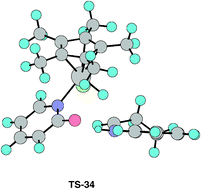A theoretical study of the mechanism for the homogeneous catalytic reversible dehydrogenation—hydrogenation of nitrogen heterocycles†
Abstract
A mechanism for the

* Corresponding authors
a
Room 302, 5 Building, Beiyuan District, Suzhou, Anhui, People’s Republic of China
E-mail:
xbzhtc@gmail.com
b State Key Laboratory of Theoretical and Computational Chemistry, Institute of Theoretical Chemistry, Jilin University, Changchun 130023, People's Republic of China
A mechanism for the

 Please wait while we load your content...
Something went wrong. Try again?
Please wait while we load your content...
Something went wrong. Try again?
X. Zhang and Z. Xi, Phys. Chem. Chem. Phys., 2011, 13, 3997 DOI: 10.1039/C0CP02419H
To request permission to reproduce material from this article, please go to the Copyright Clearance Center request page.
If you are an author contributing to an RSC publication, you do not need to request permission provided correct acknowledgement is given.
If you are the author of this article, you do not need to request permission to reproduce figures and diagrams provided correct acknowledgement is given. If you want to reproduce the whole article in a third-party publication (excluding your thesis/dissertation for which permission is not required) please go to the Copyright Clearance Center request page.
Read more about how to correctly acknowledge RSC content.
 Fetching data from CrossRef.
Fetching data from CrossRef.
This may take some time to load.
Loading related content
